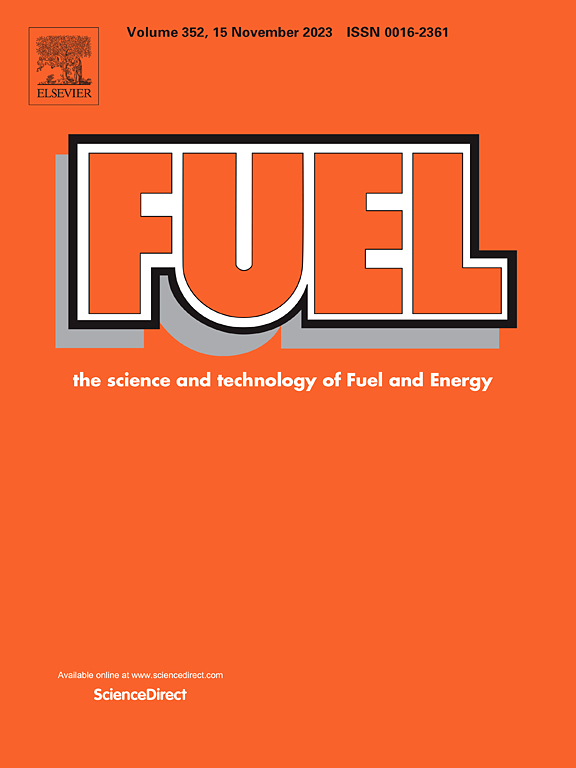碳热镁渣自稳定型cao基CO2捕集剂及其新型抗烧结机理
IF 6.7
1区 工程技术
Q2 ENERGY & FUELS
引用次数: 0
摘要
作为另一种可行的二氧化碳捕集方法,碳基循环(CaL)技术引起了人们的广泛关注。然而,在重复的碳化/再生循环中,cao基吸附剂受到严重的容量退化的影响。目前,人们采用了各种改性方法来提高材料的抗烧结性能。然而,这些策略通常与复杂的合成加工和昂贵的化学剂有关,抵消了天然CaO资源的成本收益。在此,我们开发了一种简单且经济高效的方法,通过直接升级CTMS,仅通过水化和煅烧过程制备自稳定的cao基吸附剂,无需任何额外的化学剂。在温和条件下,CTMS-H-C表现出0.37 gCO2的初始CO2吸收量。经过10次碳化/再生循环后,其容量下降率为29.73%,远低于煅烧石灰石(75.13%)和商用CaO(67.87%),表明CTMS-H-C具有良好的循环稳定性。吸附动力学分析表明,吸附速率的下降与多次循环后吸附剂热烧结引起的结构劣化有关,特别是在动力学控制状态下。通过密度泛函理论计算和TG/DTG表征,为MgO增强cao基吸附剂循环捕集CO2能力的机理提供了新的视角。研究结果表明,MgO的掺入可以减弱CO2与CaO的结合作用,有利于加速CO2的解吸,从而避免奥斯特瓦尔德成熟引发的烧结。综上所述,本研究不仅为合成高性价比的cao基吸附剂提供了一条途径,而且通过将CTMS转化为cao基吸附剂,为镁冶炼提供了一种可持续的废物管理方法。本文章由计算机程序翻译,如有差异,请以英文原文为准。
Carbothermal magnesium slag-derived self-stabilizing CaO-based sorbent for CO2 capture and its novel sintering-resistance mechanism
CaO-based looping (CaL) process has attracted substantial attention as another available CO2 capture alternative. However, CaO-based sorbents are afflicted by severe capacity degradation over repeated carbonation/regeneration cycles. Currently, various modification approaches have been used to improve the anti-sintering property. However, these strategies are frequently associated with complex synthetic processing and expensive chemical agents, offsetting the cost gains of natural CaO resources. Herein, we developed a simple and cost-effective method to prepare self-stabilizing CaO-based sorbents via directly upcycling the CTMS only through hydration and calcination proceedings, without any additional chemical agents. Under mild conditions, CTMS-H-C exhibits an initial CO2 uptake of 0.37 gCO2 gspecimen−1. After 10 carbonation/regeneration cycles, its capacity decline rate is 29.73 %, which is much lower than that of calcined limestone (75.13 %) and commercial CaO (67.87 %), highlighting the superior cyclic stability of CTMS-H-C. Moreover, the sorption kinetic analysis reveals that the degeneration of the sorption rate is correlated with the structural deterioration caused by thermal sintering of the sorbent after multiple cycles, especially at the kinetically-controlled state. By density functional theory calculations and TG/DTG characterizations, we provide a new perspective of the enhancement mechanism of MgO on cyclic CO2 capture capability of CaO-based sorbents. The findings suggest that the incorporation of MgO can weaken the binding interaction of CO2 with CaO, which is conducive to accelerating the desorption of CO2, thereby avoiding sintering triggered by Ostwald ripening. Overall, the work not only provides a cost-effective route to CaO-based sorbent synthesis, but also offers a sustainable waste management method for magnesium smelting via vacuum carbothermal reduction by transforming CTMS to CaO-based sorbent.
求助全文
通过发布文献求助,成功后即可免费获取论文全文。
去求助
来源期刊

Fuel
工程技术-工程:化工
CiteScore
12.80
自引率
20.30%
发文量
3506
审稿时长
64 days
期刊介绍:
The exploration of energy sources remains a critical matter of study. For the past nine decades, fuel has consistently held the forefront in primary research efforts within the field of energy science. This area of investigation encompasses a wide range of subjects, with a particular emphasis on emerging concerns like environmental factors and pollution.
 求助内容:
求助内容: 应助结果提醒方式:
应助结果提醒方式:


